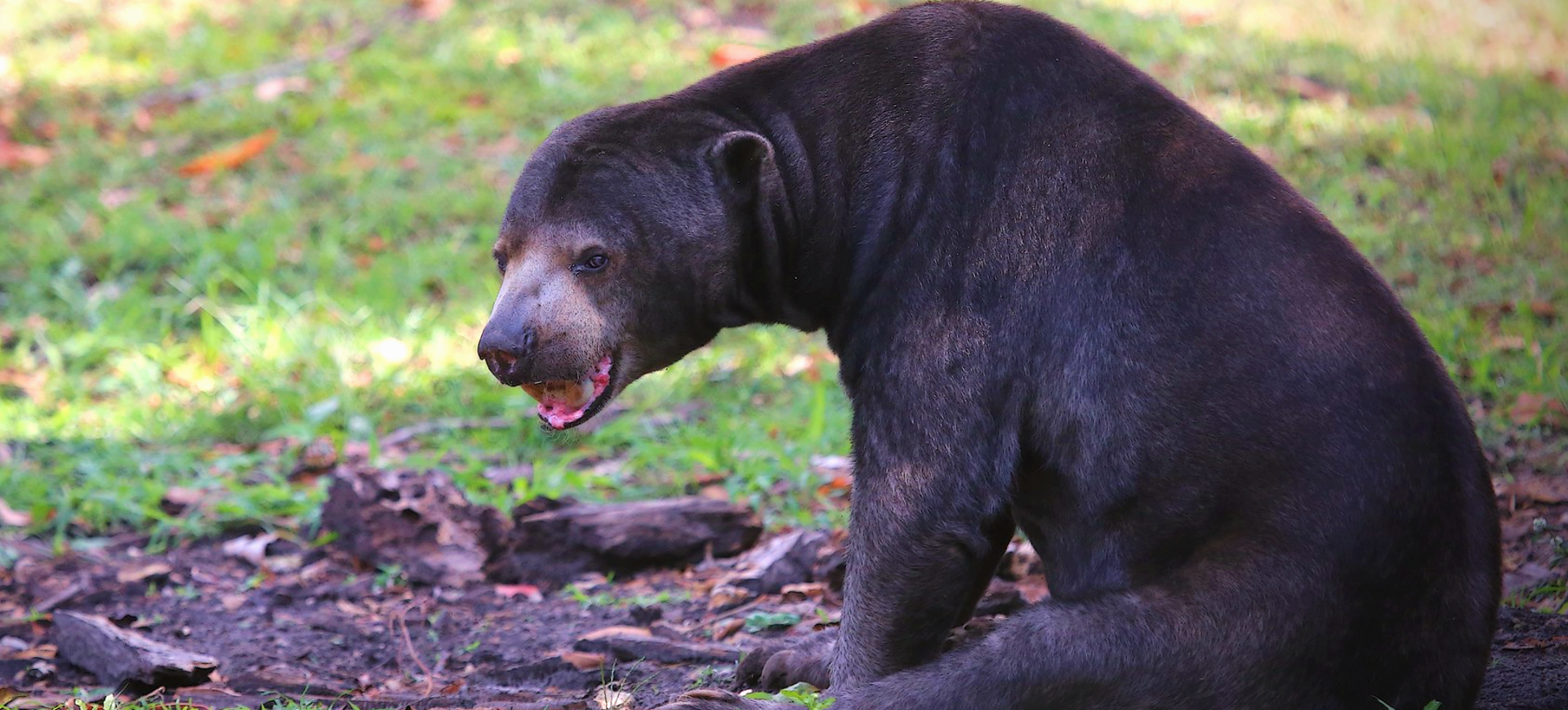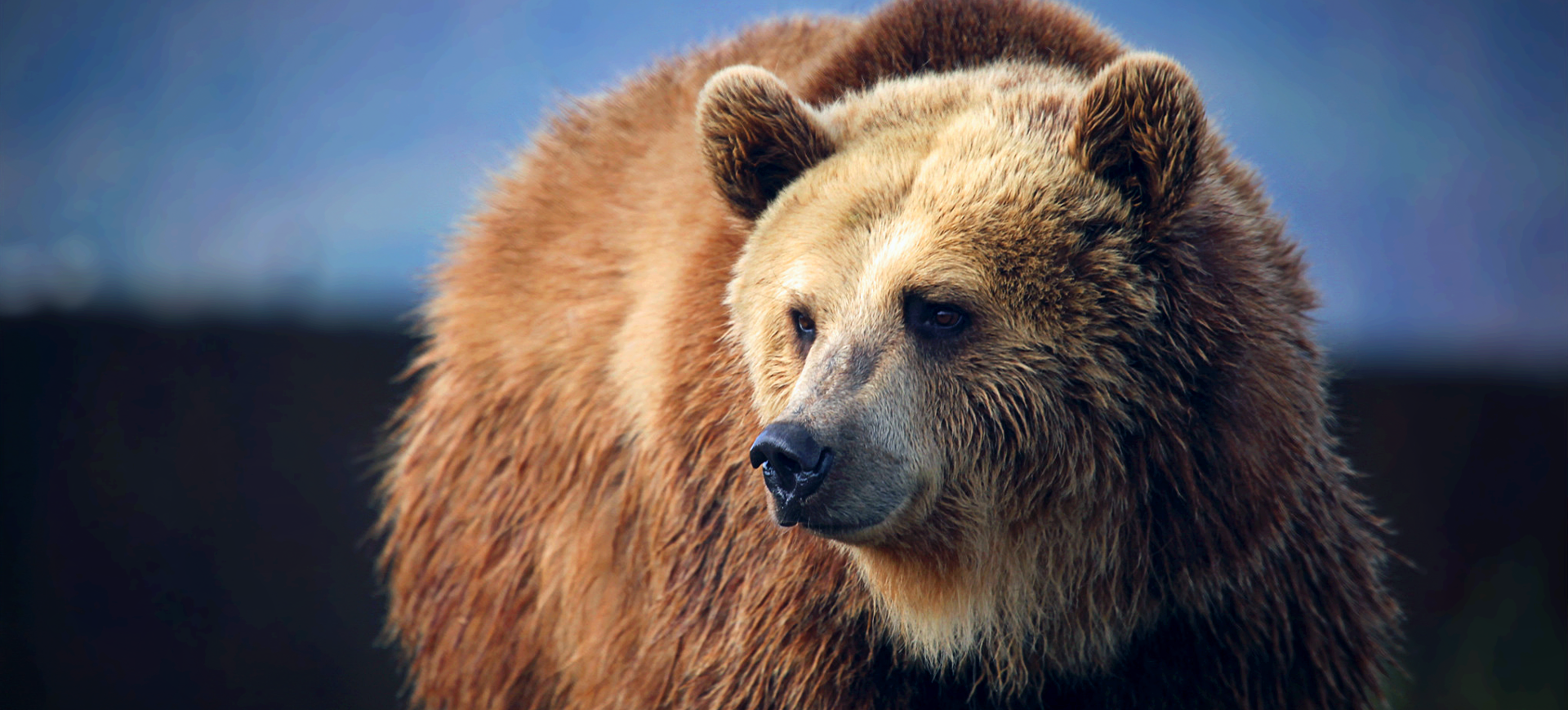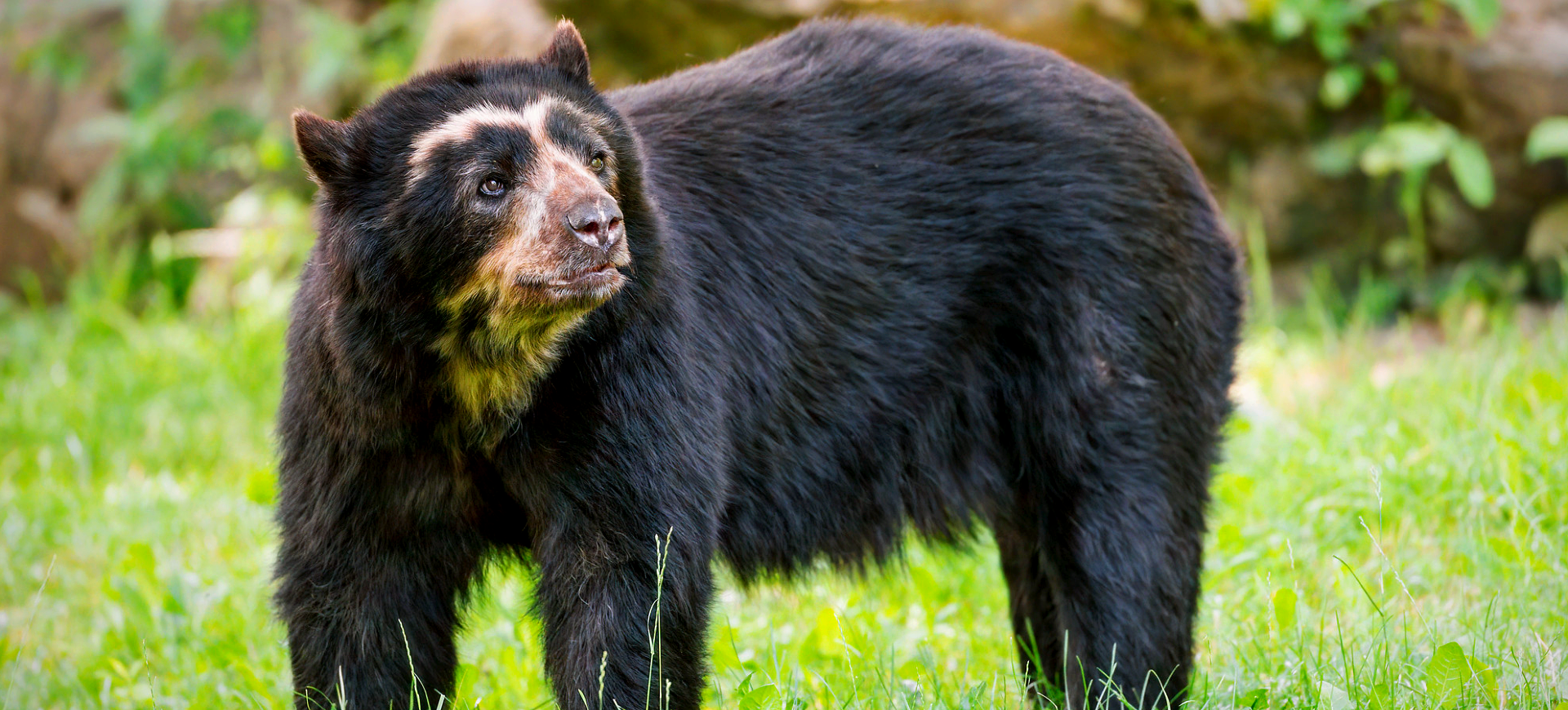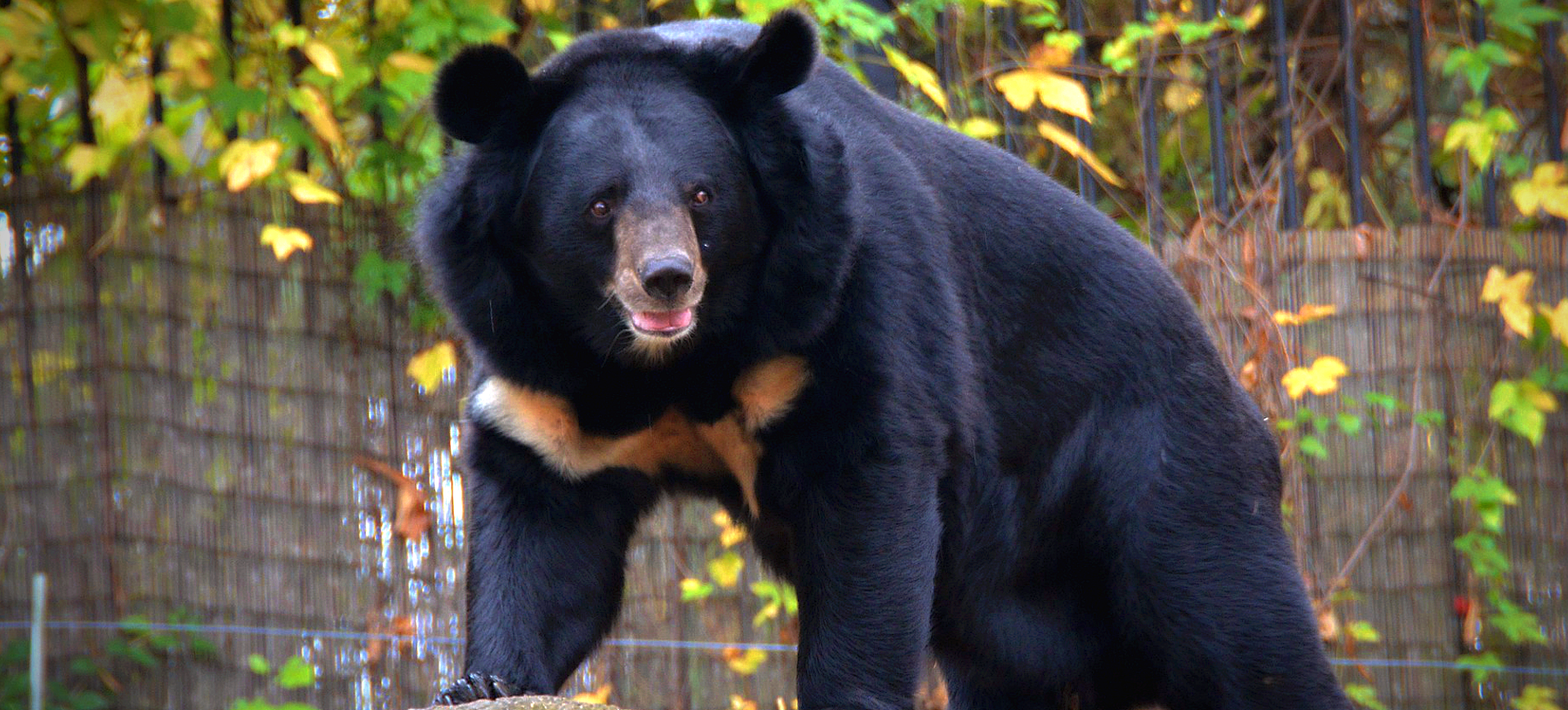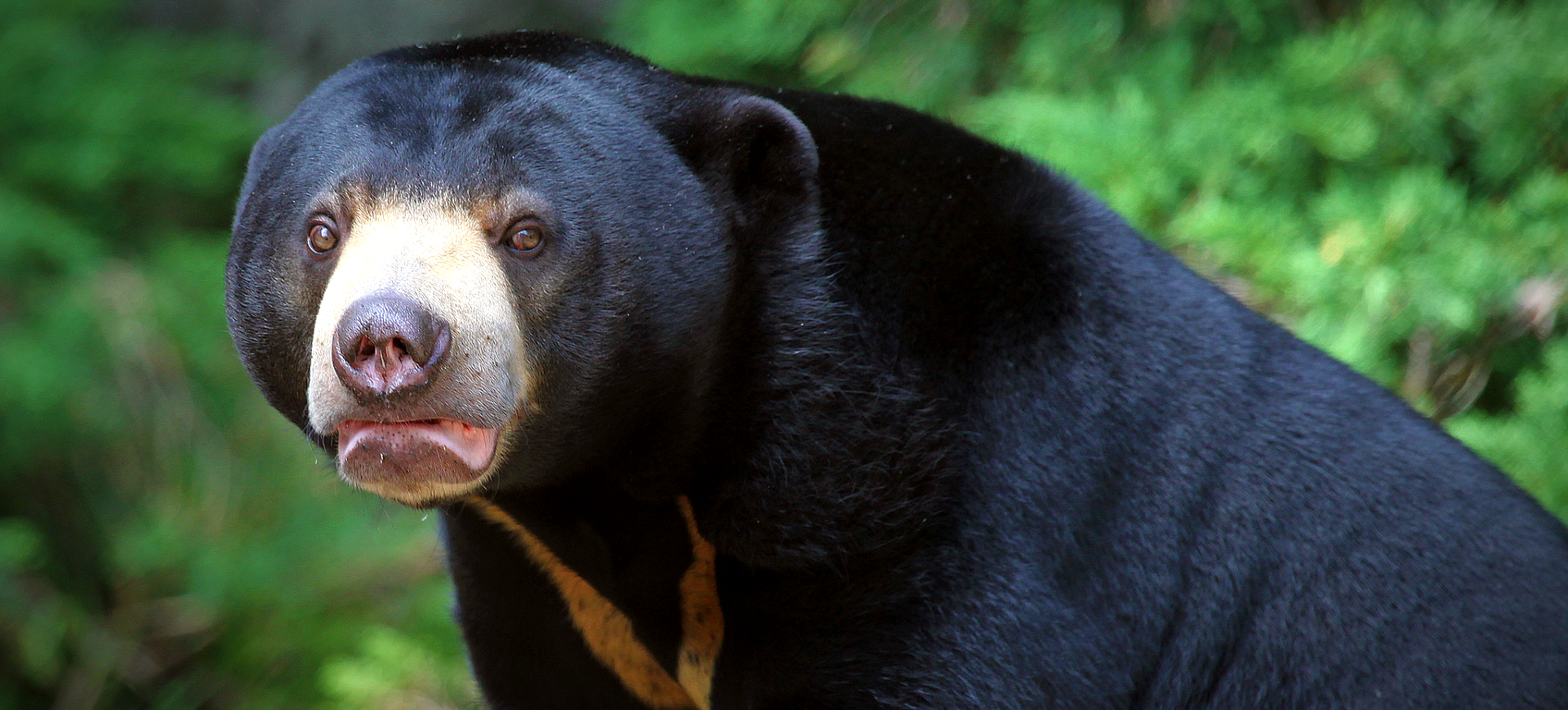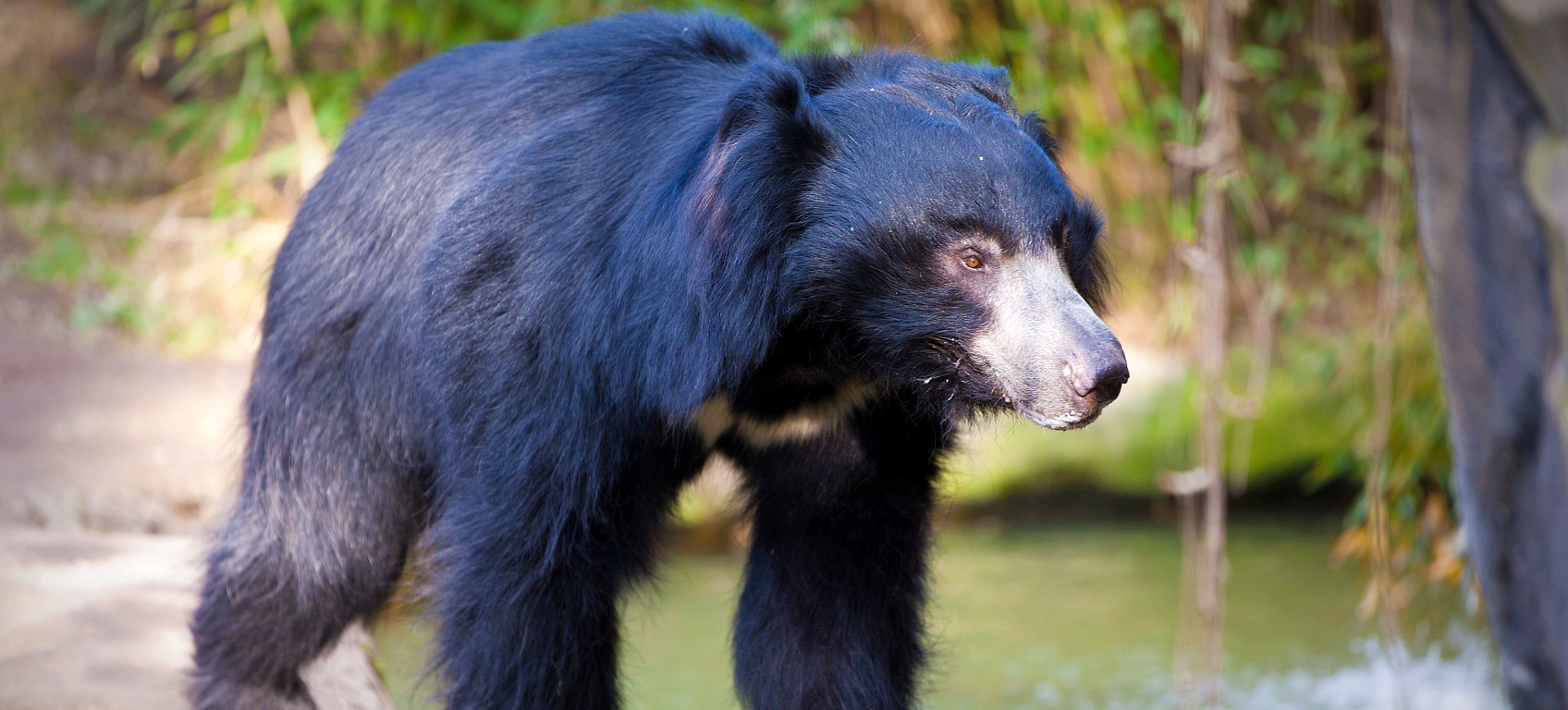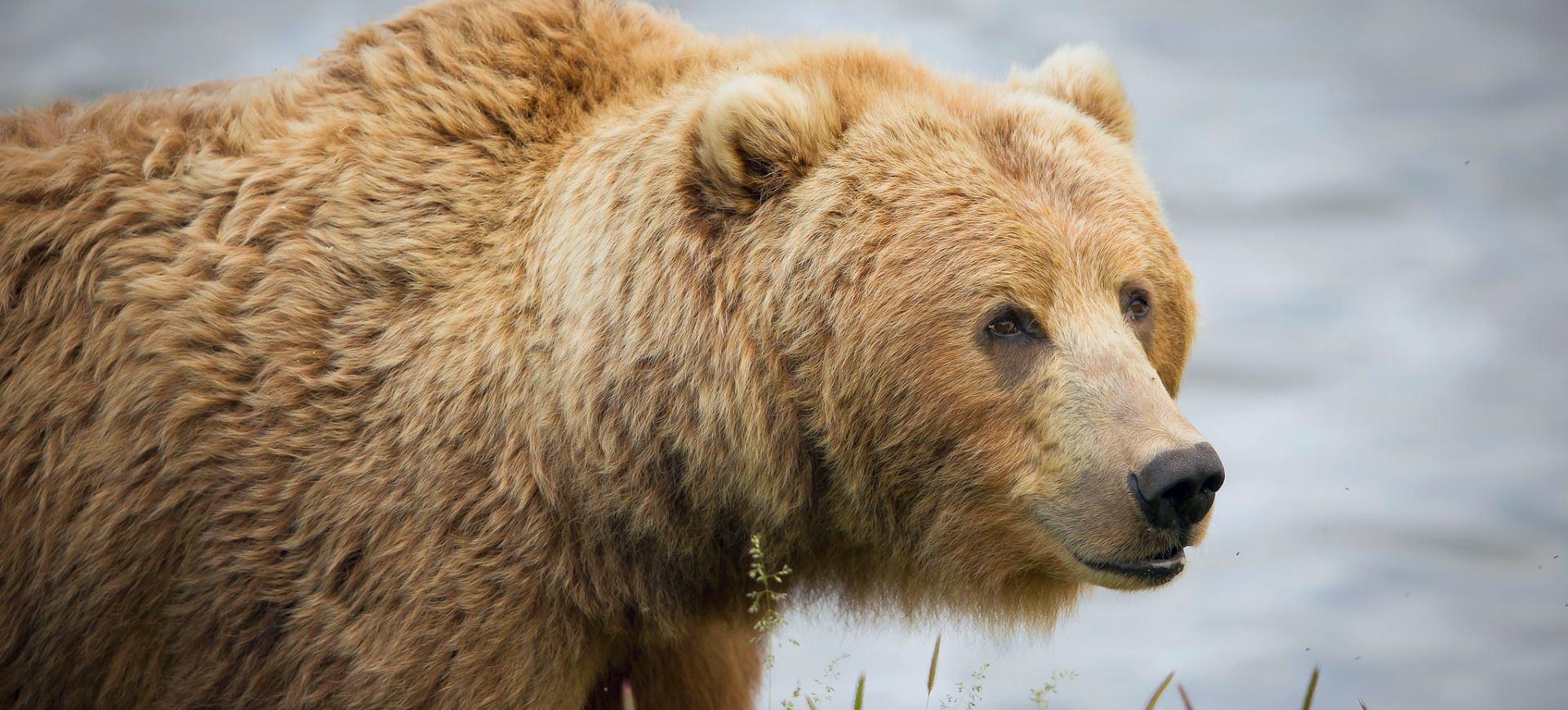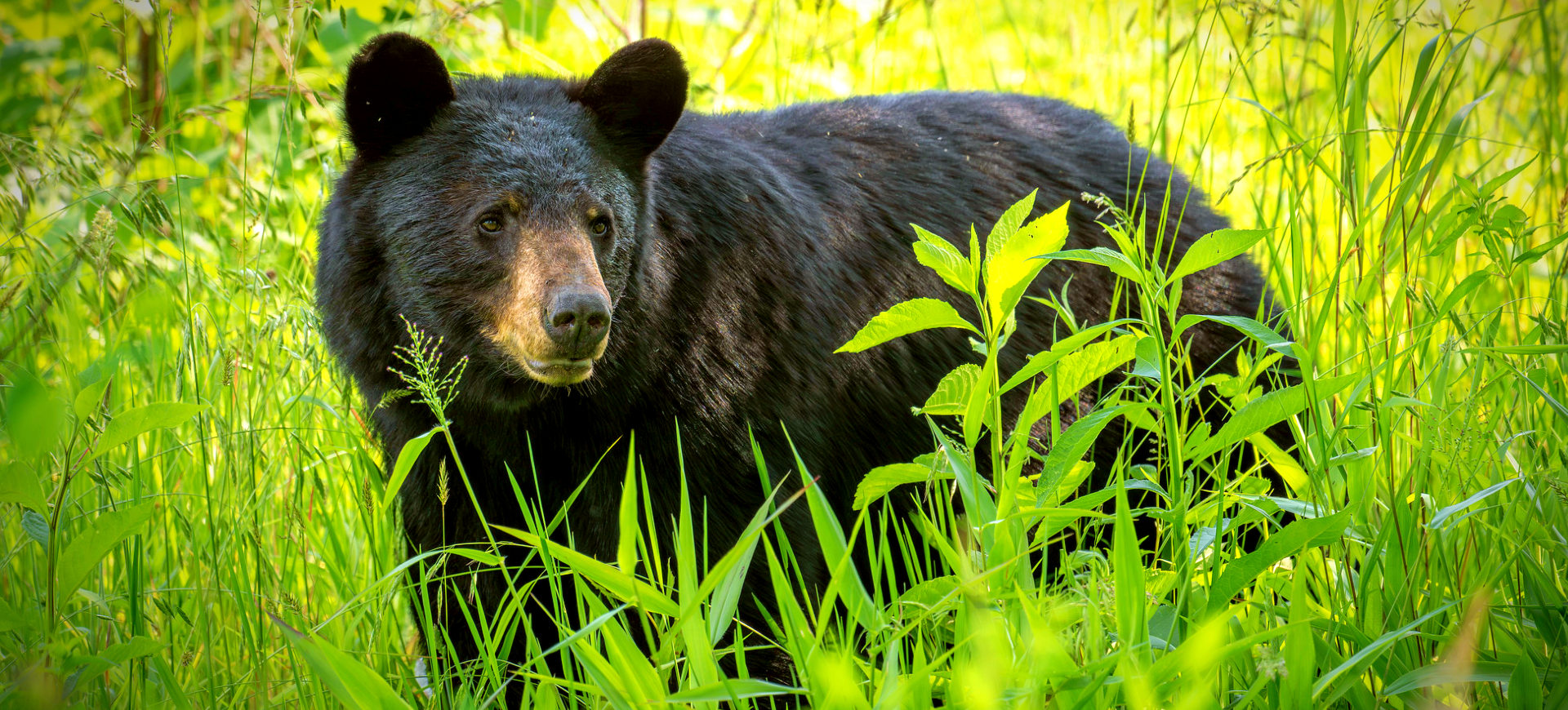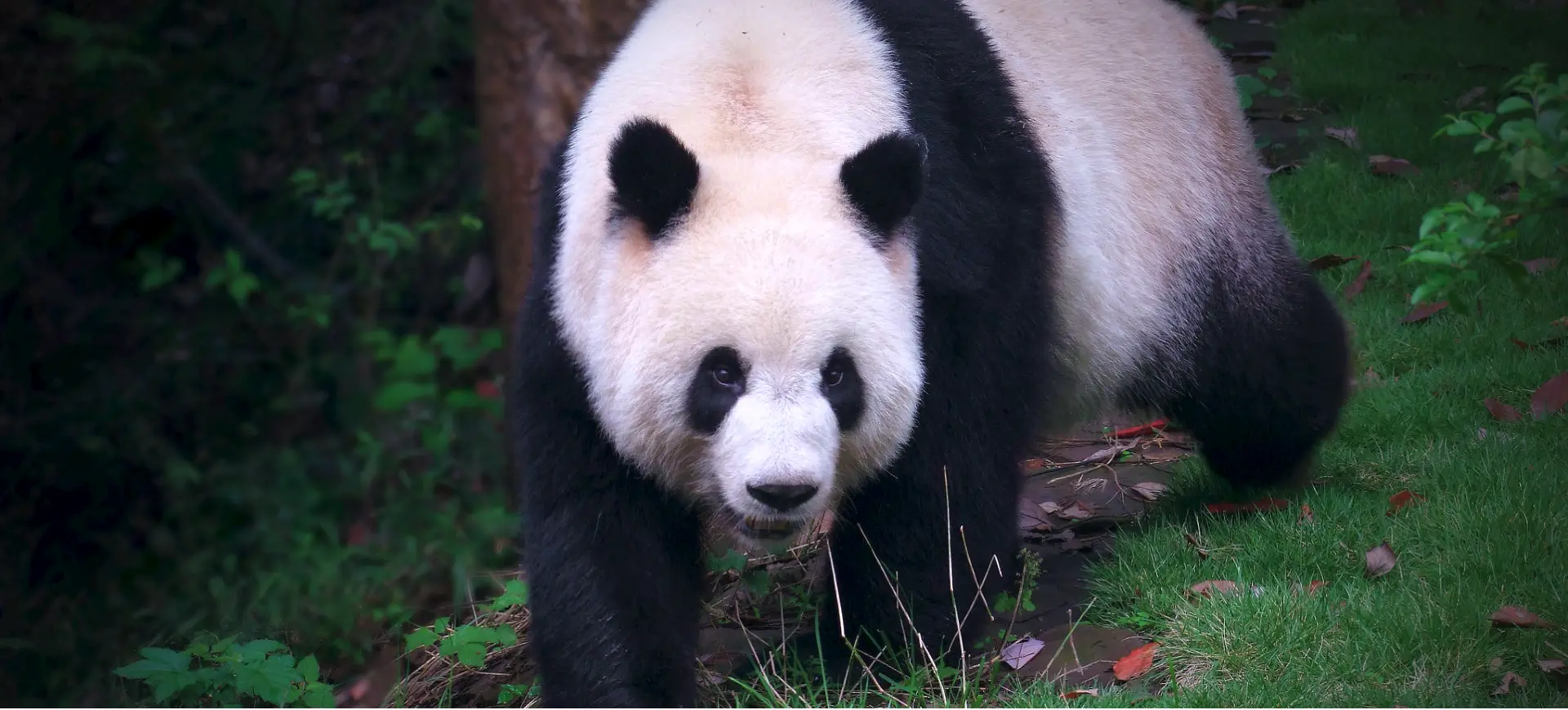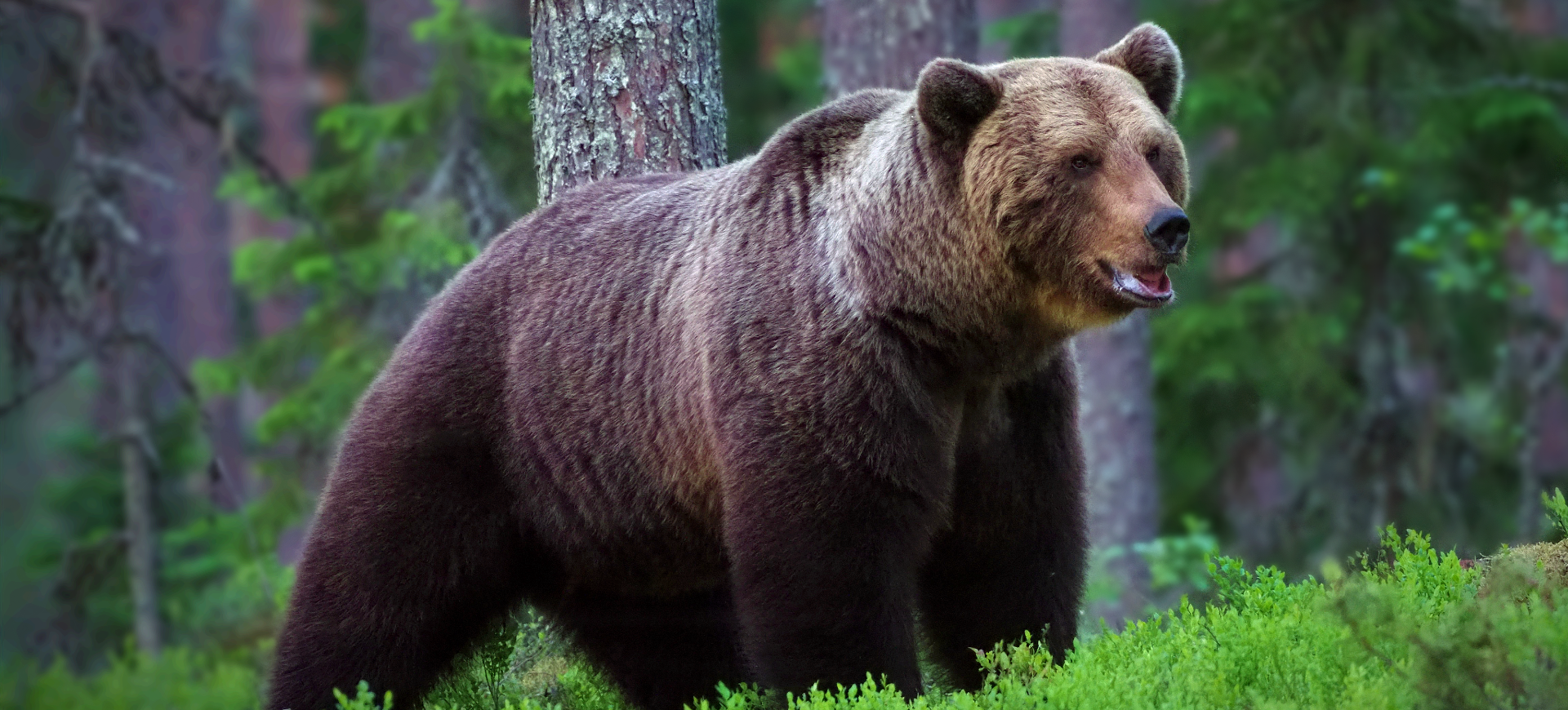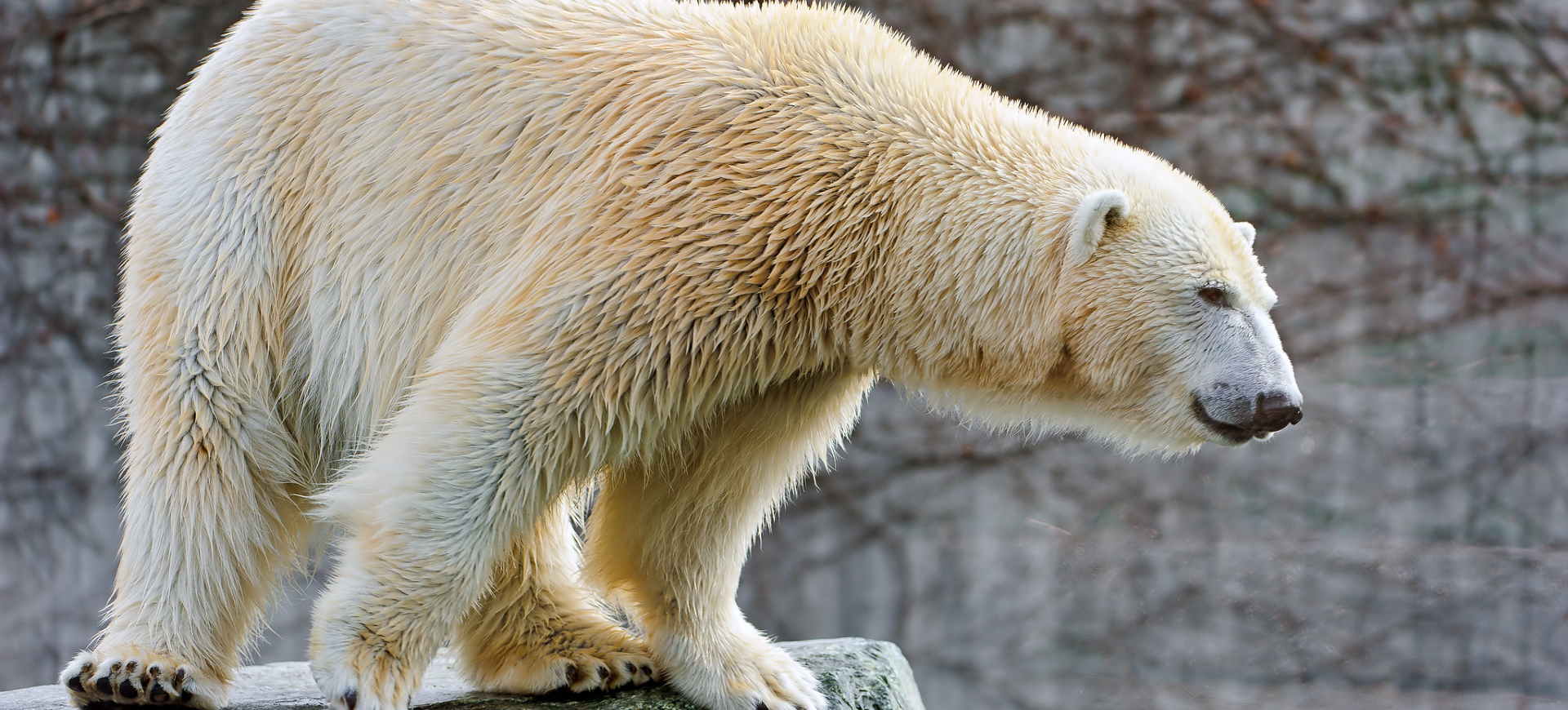Overview
The Malayan Sun Bear, also known as the Honey Bear, is the smallest member of the bear family. It gets its name from the characteristic golden or white patch on its chest, which folklore says represents the rising sun. This bear is native to the tropical rainforests of Southeast Asia. Malayan Sun bears are excellent climbers, with their short, sharp, and curved claws helping them easily navigate tree trunks and branches. They are unique in many ways due to their size and unusually long tongue that they use to extract honey from beehives, earning them their alternative name, the Honey Bear.
The Malayan Sun Bear’s omnivorous diet consists mainly of insects, fruits, and honey. They play an essential role in the ecosystem by controlling termite populations and assisting in seed dispersal for various plant species. Despite their small size, Malayan Sun Bears are solitary and are known to be extremely fierce when cornered.
These bears face severe threats from habitat loss and poaching for their body parts, such as gallbladders and claws, used in traditional medicine and as status symbols. They are also captured for the illegal pet trade. These threats have led to a significant decline in their population, raising conservation concerns.
Taxonomy
Kingdom
Phylum
Class
Order
Family
Genus
Species
Sub Species
Type
Physical Description:
The Malayan Sun Bear is a compact and robust animal, distinguished by its sleek, black fur and a unique, horseshoe-shaped, golden crest on its chest. This crest can sometimes be white or light orange and varies in shape, unique to each individual, much like a human’s fingerprint. These bears have a small, flat head with a short snout, and their ears are relatively small and round. Their eyes are small and dark, giving them a distinctive appearance.
The Malayan Sun Bear is the smallest bear species, with males slightly larger than females. Males measure about 47 to 59 inches, and females 47 to 51 inches. They weigh between 60 to 145 pounds and stand roughly 2.3 feet at the shoulder. Their paws are broad with hairless soles, possibly an adaptation for climbing trees. They have large, sickle-shaped claws that are extremely sharp and long, reaching up to 4 inches. Malayan Sun bears also have an unusually long tongues, measuring up to 10 inches, primarily used for extracting honey and insects from trees.

Lifespan: Wild: ~25 years || Captivity: ~30 years

Weight: Male: 60-150 lbs (27-68 kg) || Female: 40-90 lbs (18-41 kg)

Length: Male: 47-59 in (120-150 cm) || Female: 40-53 in (102-135 cm)

Height: Male: 24-30 in (60-70 cm) || Female: 22-26 in (55-65 cm) at Shoulder

Top Speed: 30 mph (48 km/h)
Characteristic:
Native Habitat:
Malayan Sun Bears are inhabitants of the dense lowland forests of Southeast Asia, characterized by high rainfall. They are native to Malaysia, Burma, Cambodia, Laos, Vietnam, and parts of southern China. These forests provide the necessary cover and food resources they need for survival.
Malayan Sun bears are arboreal and spend much of their life in trees. They are also known to be excellent swimmers. Their preferred habitat encompasses tropical evergreen rainforests, including lowlands and highlands up to 1,200 meters. They have also been found in mangrove forest habitats.
Climate Zones:
Biomes:
Biogeographical Realms:
Continents:
Diet:
Diet & Feeding Habits:
The Malayan Sun Bear is an omnivore, with its diet encompassing a diverse array of foods. It consumes fruits, berries, roots, insects, small mammals, birds, and fish. However, it has a particular penchant for honey, hence its nickname, “Honey Bear.” Its long, thin tongue can extend up to 25 centimeters and extracts honey from beehives and insects from crevices. The Malayan Sun Bear’s strong jaws and sharp teeth allow it to break open tree trunks and termite mounds when foraging for food.
These bears also have an exceptional sense of smell, which aids in detecting food. They can sniff insects, carrion, and honey from several kilometers away. Despite their small stature, they are excellent climbers, enabling them to forage on the ground and in trees.
Mating Behavior:
Mating Description:
Malayan Sun Bears are solitary animals; males and females generally come together only for mating. Mating can occur at any time of the year but is most common between June and July. After a gestation period of approximately 96 days, the female Malayan Sun Bear gives birth to one or two cubs.
The newborns are altricial, born blind, hairless, and helpless. The mother nurtures them in a nest in the ground or high up in a tree hollow. The cubs stay with the mother for about two years, learning essential survival skills before venturing independently.
Reproduction Season:
Birth Type:
Pregnancy Duration:
Female Name:
Male Name:
Baby Name:
Social Structure Description:
Malayan Sun Bears are solitary animals. They tend to be active mainly at night, although they can also be seen during the day. Each bear has a home range that it patrols, and these areas can overlap with other bears. They are not territorial but tend to avoid each other.
Malayan Sun bears are strong and agile climbers, spending much of their time in trees. They can construct sleeping platforms in trees or may sleep in tree hollows. They are also known to dig dens in the ground.
Groups:
Conservation Status:
Population Trend:
The Malayan Sun Bear population in the wild is challenging to quantify due to several factors. These elusive creatures dwell within Southeast Asia’s dense, impenetrable rainforests, making tracking and studying them complicated. Furthermore, their solitary and primarily nocturnal lifestyle contributes to the difficulty of obtaining precise population data. Nevertheless, current estimates suggest that fewer than 1,000 adults remain in the wild. These scattered populations are primarily concentrated within protected regions across Southeast Asia, signifying the vital role of these sanctuaries in their survival.
Regrettably, the Malayan Sun Bear populations have been experiencing a rapid decline, predominantly due to habitat loss and uncontrolled hunting. Over the last three decades, the population is believed to have plunged by over 30%, painting a grim picture of their existence in the wild. Deforestation for agricultural expansion, particularly for palm oil plantations, has significantly reduced their natural habitats, leading to the fragmentation of populations and limited access to essential resources such as food and mates. Hunting for their body parts, coveted for use in traditional medicine and as delicacies, further exacerbates the threat to their survival. The combined impact of these threats has led to a severe and alarming contraction of the Malayan Sun Bear population.
Population Threats:
The main threats to the Malayan Sun Bear population include habitat loss and commercial hunting. Rapid deforestation for palm oil production and other agricultural activities has led to significant habitat loss and fragmentation. This reduces their available territory and limits their access to food sources and mates, impacting their reproduction rates.
Hunting is another major threat. Malayan Sun Bears are hunted for their gallbladders, used in traditional Asian medicine, and their paws, considered a delicacy. The illegal pet trade also poses a severe threat to their population. Baby Malayan Sun Bears are often captured from the wild, with their mothers frequently killed.
Conservation Efforts:
Various efforts have been made to protect the Malayan Sun Bear. They are listed as vulnerable on the IUCN Red List, and international trade in these bears or their parts is prohibited by their listing on Appendix I of CITES. Many countries within their range have also implemented laws to protect them.
Numerous organizations work towards Malayan Sun Bear conservation. The Malayan Sun Bear Conservation Centre in Malaysia and the Free the Bears Fund are dedicated to rescuing and rehabilitating captured and orphaned Malayan Sun Bears. Conservation education and awareness programs, research, and habitat protection are also part of the initiatives to protect these animals.
Additional Resources:
Fun Facts
- Malayan Sun Bears have the most extended tongue of any bear species, up to 25 cm long.
- Despite being the smallest bear species, Malayan Sun Bears have mighty jaws and can bite through tree bark and termite nests.
- The Malayan Sun Bear’s chest patch is unique to each individual, much like a human’s fingerprints.
- They have an exceptional sense of smell that’s about 1,000 times better than a human’s.
- Malayan Sun Bears are excellent climbers and spend much of their time in trees.
- Malayan Sun Bears are also known as “Honey Bears” because they love honey.
- Unlike other bear species, Malayan Sun Bears do not hibernate due to the warm climate of their habitat.
- They have large paws with hairless soles, probably an adaptation to help them climb trees.
- Malayan Sun Bear’s mother carries her cub in her mouth, like a cat with her kittens.
- Malayan Sun bears contribute to the health of the forest ecosystem by controlling termite populations and dispersing seeds through their scat.







